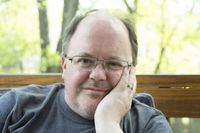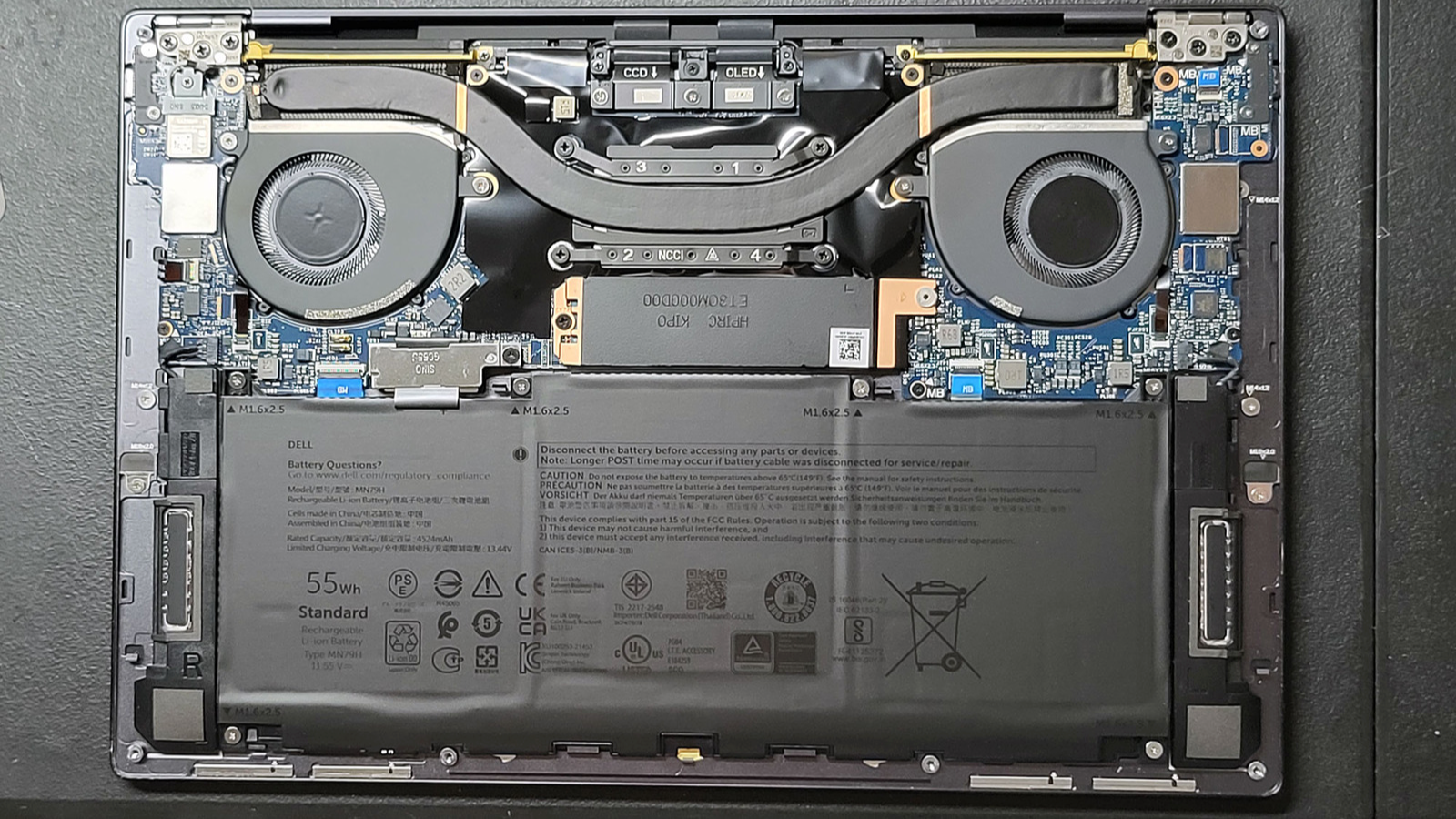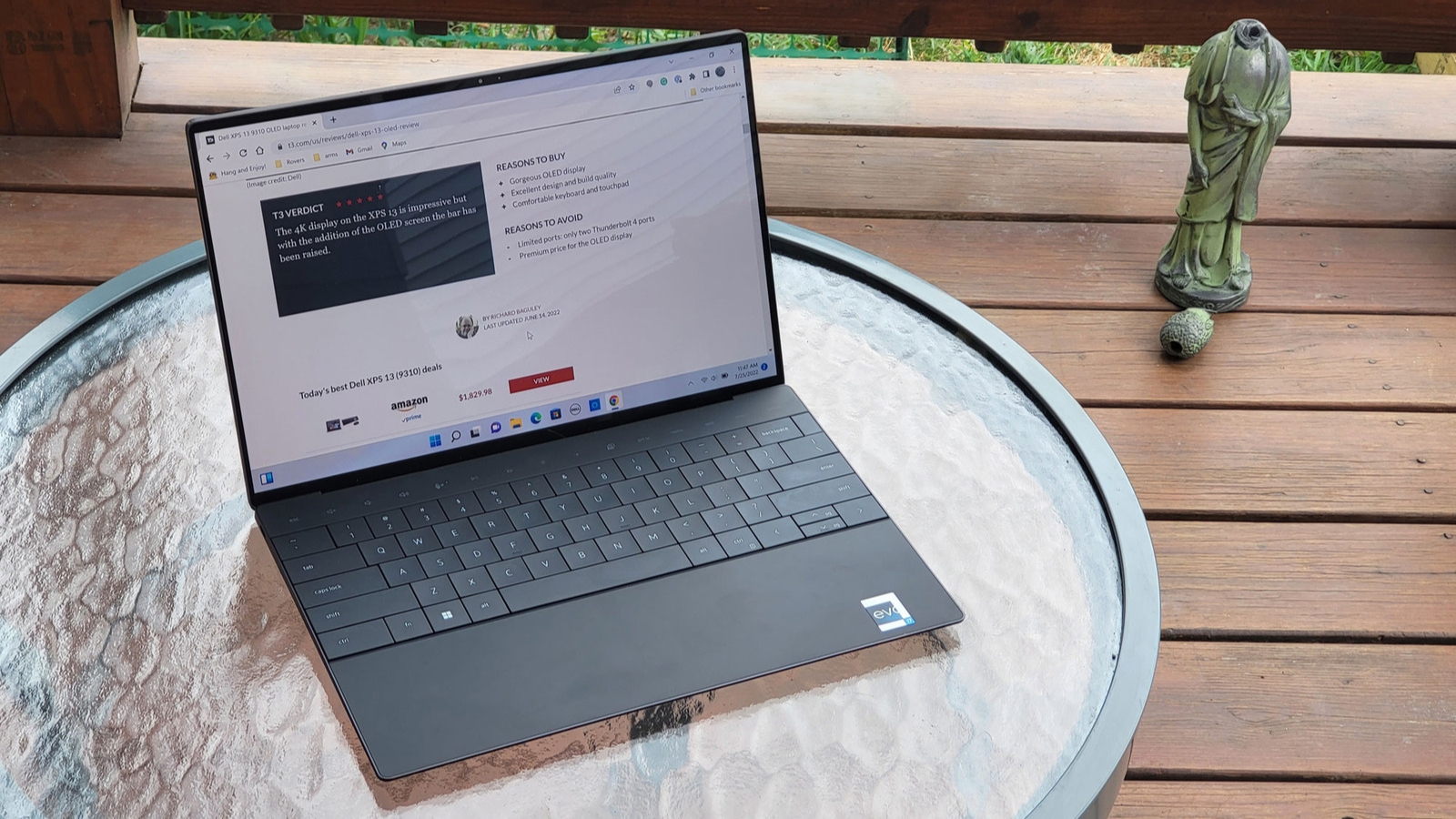Dell XPS 13 Plus review: elite looks and performance
A new keyboard and trackpad design plus a performance and battery boost provide this XPS 13 a premium upgrade


The Dell XPS 13 Plus is a premium laptop with a redesigned keyboard, trackpad and interior, making it faster and easier to use. It’s a plus package that’s worth the plus price.
-
+
Battery life and performance boost from the standard XPS 13
-
+
Large keys and a hidden touchpad make for comfortable typing and mousing
-
+
Gorgeous OLED screen
-
-
Only two Thunderbolt 3 outputs
-
-
No headset socket
Why you can trust T3

Premium models often feel like a cynical way to extract more money from customers who have it and just want to spend it. The Dell XPS 13 Plus doesn’t feel that way, though. The changes made to the design and internals are genuinely beneficial, making it a faster, more comfortable to use laptop.
I hope the changes are used in the next versions of standard XPS models — the bigger keyboard and concealed trackpad are both big improvements. Make no mistake: the XPS 13 Plus is a premium laptop, and you are paying more for the looks and a minor performance increase. But it really does look great and is an impressively fast laptop in a very small case.
Overall, this upgraded model is one of the best laptops of 2022, and you can find out how we test to determine that or read on to learn why.
DELL XPS 13 PLUS REVIEW: PRICE AND AVAILABILITY
The Dell XPS 13 Plus is available now, starting at $1,149 (£1,168.99, AU$2,339.01) for the base model with the i5-1240P processor, 8GB of RAM and FHD screen. The top-of-the-line model, with the i7-1280P processor, 32GB of RAM, and a UHD screen, will set you back $1,899 (£2,048.99, AU$3,853.55).
The review unit that I tested was somewhere in the middle, with an i7-1280P processor, 16GB of RAM, and the 13.4-inch OLED display, which is priced at $1,799 (£1,699.00, AU$3,399.00). It’s available in Platinum and Graphite finishes.

The Dell XPS 13 Plus laptop weighs 2.71 pounds.
DELL XPS 13 PLUS REVIEW: DESIGN AND FEATURES
Dell claims the XPS 13 Plus is about minimalism rather than looking flashy, and it’s true. The whole design of the Plus is about making the features of this laptop simpler and easier to use. Let’s take a look at the updates in turn, and read the XPS 13 review if you need a refresher on its features.
The keyboard is very different from the original model. The XPS 13 Plus offers larger keytops that run right to the edge of the laptop and replace the function keys with touch sensors on the glass panel. The larger keys are a big plus, as it means that individual keys are easier to find for ham-fisted typists like me.
Get all the latest news, reviews, deals and buying guides on gorgeous tech, home and active products from the T3 experts
It also makes better use of the space: there are no strips of unused space at the edge of the laptop case. The lack of gaps between the keys — Dell refers to this as a lattice-free design — does require a bit of practice, though, as you don’t feel the edges of the keys when hunting around with your fingertips.
The function keys also have a new design. Gone are the usual tiny row of keys, replaced by touch sensors under a glass panel. This isn’t a second screen like the touch bar on older Mac laptops; it just replaces the function keys. Normally, the lights behind this panel show the functions you’ll often find on the top row of a laptop keyboard, such as escape, volume, screen brightness, etc.
Hold down the function key — the light switch shows labels for escape, F1 to F12 and the delete key. A very gentle touch on the light is enough to activate the key. It works well, but it takes a bit of getting used to. It does feel odd hitting ctrl-alt-delete and having one of them be a touch button.
Speaking of things that take some getting used to: the usual recessed touchpad is gone, replaced with one hidden under the Gorilla Glass 3 panel on the bottom of the keyboard tray. There are no indications of where the active area of the touchpad is: I found myself feeling around to find it at first before I got a sense of where it is, in the middle of the glass panel.
Surprisingly, this trackpad has a nice feel when you press down for a mouse click. That’s a fake-out, though — you feel the vibration of small motors under the panel, making it seem like you are clicking a switch. When you try the same thing with the laptop turned off, you realize there is no physical switch, just a smooth glass panel. It’s a nice piece of engineering that makes you feel like you’re clicking without a failure-prone mechanical switch.
I am a notorious button basher. I go through a new mouse every six months or so, and laptop touchpads tend to fail quickly because I tend to aggressively click on them when I am in a foul mood — which, as a freelance writer, happens a lot. So, it will be interesting to see if this new fake click holds up, but it feels simpler and stronger than the typical touchpad.

The internals of the XPS 13 Plus have also been changed. It uses a faster processor than the XPS 13 and has a beefed-up cooling solution with bigger fans. That and a bigger battery make it slightly heavier, at a little more than 2.7 pounds without the power adapter. And that’s another upgrade — a 60W USB-C power adapter is included that supports ExpressCharge 2.0, which means it can charge the battery to 80% in about two hours.
Two Thunderbolt 4 ports — one on either side — provide connections to the outside world and the connection for the included 60W USB-C power adapter. Like the standard XPS 13, there is no headset connector, but Dell includes a USB-C to 3.5mm headset adapter and a USB-C to USB-A adapter. Just don’t forget them when heading out on a trip.
The review model I tested came with the 3.5K, 3456-x-2160-pixel OLED display, which is gorgeous. It has excellent color, rich greens and deep blues, and plenty of shadow detail. I measured the screen brightness at a maximum of 336 Cd/M2 (candelas per square meter) — a bit dimmer than many LED screens but usable in everything except direct sunlight. It was certainly usable in my well-lit office and sitting in the shade on my deck. The resolution is slightly below 4K, but watching HDR 4K videos from YouTube or Netflix on this display was still a real pleasure.
The strength of OLED screens like that of the XPS 13 Plus is in their dynamic range, and this one is no exception, showing everything from deep blacks and subtle shadow details to bright highlights. Most OLEDs dim the screen a bit to prevent overheating when displaying a mostly white screen, such as a word processing document.
I saw no evidence of this on the XPS 13 Plus. The display didn't dim after several minutes of showing a white screen. However, that isn’t something I would recommend because it could damage the screen in the long term and run the battery down quicker, as OLEDs draw a lot more power when showing a very bright screen. The system does warn you if you have the brightness turned up while on battery power, and turning the brightness down will significantly extend the battery life.

The internals of the Dell XPS 13 Plus deliver powerful performance.
DELL XPS 13 PLUS REVIEW: PERFORMANCE & BATTERY
The review unit I tested came with a Core i7-1280P, Intel’s top-of-the-line laptop processor with 14 cores — six P (for performance) cores that run up to 4.8Ghz and eight E (for efficient) cores that can go up to 3.6Ghz. That’s along with 16GB of DDR5 RAM, which makes for a powerful combination, and the XPS 13 Plus has the numbers to prove it. I tested it with the benchmarking program PC Mark 10, where the laptop achieved an impressive score of 5393, about a 6% jump from the standard XPS 13.
That’s enough to give you an edge when working in power-hungry apps like Adobe Photoshop. Editing large photos in that greedy program felt a little snappier and more responsive than on the XPS 13. The option to install up to 32GB of RAM is also welcome, as you’ll need that if you’re running Photoshop. Get it if you think you might need it — the memory is fixed to the motherboard and is not upgradeable by the user.
The XPS 13 Plus was a bit out of its depth when it came to playing first-person shooter games, though. It achieved a rather unimpressive score of 1710 in the 3D Mark Time Spy gaming benchmark. That’s pretty good for a laptop with integrated graphics where the graphics processor is built into the processor. But it’s pretty weak compared to a laptop with a separate graphics processor like the Microsoft Surface Laptop Studio, which scored 4302 with its NVidia 3050 GPU.
Doom Eternal proved to be a bit much for the integrated Xe graphics of the XPS 13 Plus. The game looked great on the OLED screen but ran at a rather jumpy 20 to 25 frames per second at Full HD resolution in Good graphics mode. If your gaming runs more to the intellectual than the bloodthirsty, you may be fine, though. My current gaming obsession, the factory-building Factorio (with the Seablock mod), ran smoothly and looked great, so the XPS 13 Plus should be able to handle most non-FPS games without too many problems.
Heat is an issue with gaming and other demanding tasks. The Core i7-1280P processor at the heart of the XPS 13 Plus is a toasty little chip, outputting up to 60 watts of heat when running flat out, although this is usually throttled down to a more manageable 28 watts. Most of that gets vented out of the air vents concealed in the hinge of the XPS 13 Plus, but it also moves into the case of the laptop.
After a long gaming session, the bottom of the case near the hinge reached a toasty 115 degrees F (about 48 degrees C), while the top above the function touch keys reached a similar 110 degrees F. That’s pretty hot if the thing is sitting on your lap.
The XPS 13 Plus may be a very small laptop, but it offers plenty of battery life: 8 hours and 11 minutes in the PC Mark 10 Video battery test, which plays a 1080P video on loop until the battery runs out. That’s a couple of hours longer than the standard XPS 13, which comes down to a slightly larger battery: 55 mAh against the 51 mAh of the XPS 13. Presumably, the integrated touchpad left more space in the base to pack this extra battery.
One thing to note here: I tested the battery life with the screen brightness turned down by two notches so that the screen brightness was approximately 200 Cd/m2, about two-thirds of the maximum. I do that for all the laptops I test to provide a standard measure, as 200 Cd/M2 is just about right for an indoor display — not too bright and not too dim.
I didn’t gain much extra battery life by reducing the screen brightness — dropping down to 100 Cd/M2 only added another five minutes of battery life — but running the screen at maximum brightness significantly ate into the battery life, dropping it to 7 hours and 13 minutes. So, avoid setting the brightness to maximum if you want to squeeze out extra battery life.

The Dell XPS 13 Plus is a premium laptop that's worth the price.
DELL XPS 13 PLUS LAPTOP REVIEW: VERDICT
The “Plus” in the Dell XPS 13 Plus isn’t just a marketing gimmick. The redesigned keyboard, trackpad and internals make for a premium package that feels like a step up from the XPS 13. Of course, that comes at a cost: you’ll pay a few hundred dollars more for them than the standard XPS 13.
Is that worth it? For many people, perhaps not — the XPS 13 is already a great laptop, and you would generally be better off investing the money in more memory or storage space. But the new design is undeniably cool, with a minimalist aesthetic that will appeal to those who value style and substance and don’t mind paying a bit extra to get it.
ALSO CONSIDER
The obvious alternative to the XPS 13 Plus is the XPS 13, the standard model in Dell’s XPS lineup. You’ll save a few hundred bucks by forgoing the Plus and still get a kick-ass laptop with a very portable design, although it doesn’t have the chic look of the XPS 13 Plus.
If you want a premium design, the Microsoft Surface Laptop Studio has a fold-over screen that turns it into a tablet but without the clunky design common to 2-in-1 laptops. It isn’t cheap — you’ll expect to pay a bit more for this nifty bit of design, although you do get the option of a discrete GPU that offers improved gaming performance.

Richard Baguley has been writing about technology since the 1990s, when he left a promising career in high finance to work on Amiga Format magazine for Future. It has been downhill for him ever since, writing for publications such as PC World, Wired and Reviewed.com. He has tested gadgets as diverse as 3D printers to washing machines. For T3, he covers laptops, smartphones, and many other topics. He lives near Boston in the USA with his wife, one dog, and an indeterminate number of cats.